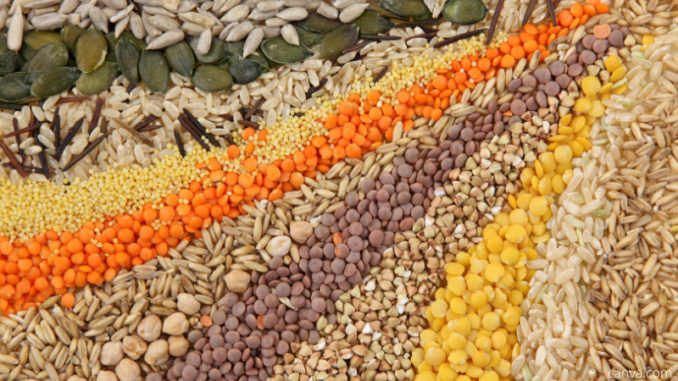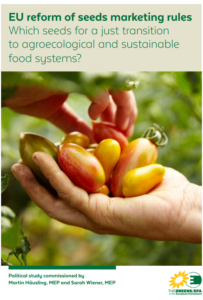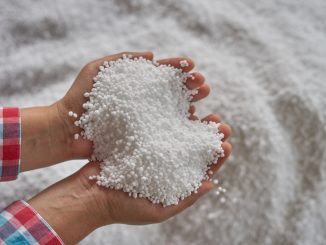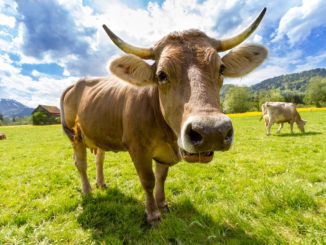
In preparation of the Commission’s expected proposal for a new seed marketing legislation on June 7th, here we republish with permission an excerpt from the recent Arche Noah report – EU reform of seeds marketing rules: Which seeds for a just transition to agroecological and sustainable food systems? The full report delves into the details on the legislative process; here we introduce the general content with an excerpt on diverse seeds and on the EU seed market as it is. report by Magdalena Prieler. Publisher: Martin Häusling MEP Sarah Wiener MEP
Diverse seeds as a tool to meet the current challenges of EU agriculture
The exchange and flow of diverse seeds is vital for the resilience and adaptation of our seed and food systems. The demanding need to adapt to changing climatic conditions as well as the long-recognised inter dependency of countries and of all actors using plant genetic resources highlight this. In the quest for resilient agro-ecological food systems, it is paramount that breeders, farmers, and gardeners pre serve and use a wide range of plant varieties and animal breeds from a wide range of species. Their diversity is essential to ensure the efficiency and resilience of production systems. Seed diversity is essential to cope with phenomena and disasters that put our food systems under stress, such as climate change and its accompanying extreme climate events, but also pest invasions and resource scarcity or depletion, such as soil or water. Investing in seed diversity has never been more important.
Agricultural production should not destroy the genetic diversity that it creates or that it is derived from. Indeed, all types of plant improvement rely on access to new genetic variability, whether from uniform varieties, resources selected and maintained on farm, or from gene banks. Unfortunately, the erosion of crop diversity is a dire reality. The current range of cultivated plant species used in agriculture remains quite limited. The varieties found in fields and gardens have very similar genetic backgrounds, mostly developed by seed companies for production systems with high-input farming conditions and the world market. The latest FAO State of the World’s Biodiversity for Food and Agriculture published in 2019 concluded that while more than 6000 plant species have traditionally been cultivated for food, today fewer than 200 species make major contributions to food production and only 9 plant species account for 66% of total crop production.
Farmers’ choice of seeds can greatly influence the resilience or the vulnerability of agricultural production to biotic and abiotic stresses. These challenges have been recognised in the European Green Deal adopted by the European Commission in 2018, and the correlated Farm to Fork and Biodiversity Strategies. To reduce the impact of our food system on our natural resources and the climate, we need to develop plant varieties that thrive under organic and other low-input growing conditions, and those that facilitate the transition to more regional, seasonal and plant-based diets – such as legumes and winter hardy vegetables.
Unfortunately, the current legal framework for seed marketing only favours the development and use of uniform plant varieties intended for industrial crop production models. It restricts the use of cultivated plant diversity. This homogenisation in plant innovation brings with it important negative economic, social, and environmental impacts.
With the new legal framework, cultivation schemes and seed development should again become genuine choices, adapted to local socio-economic and environmental conditions. Seed legislation should drive the transition towards more sustainable agricultural production and food systems as a whole, by reducing pressure on the biosphere and diversifying diets. It should also support the increase of the number of economic operators active in seed development, production and use. Furthermore, it should contribute to rural development, recognising the important sociocultural values attached to seeds.
EU seed market: constellation or consolidation?
Taken as a whole, the European Union is the third largest seed market in the world after the United States and China, accounting for approximately 20% of the global market. The European Seed Market was worth $16.77 billion in 2021 and is estimated to reach 25,68 billion by 2026, especially due to the growing demand for grains, oils and vegetables, as well as animal feed.
The EU seed market can be considered de facto globalized, consisting of smaller segments delimited by either EU Member States or by crop. Within the EU, France, Germany, Italy, Spain, and the Netherlands combined account for two-thirds of the EU market (with France accounting for nearly one third of the EU market’s total value). An estimated 7 000 firms are active in the seed industry across the various stages of the supply chain in the EU, with more than a third of these entities listed in Poland, Romania, and Hungary. With regards to employment, the sector is estimated to employ approximately 52000 persons, with the most important countries being France, Romania, Netherlands, Poland, Germany and Italy. The number of private entities in France and Netherlands is however smaller, which leads the European Commission itself to recognize consolidation in these two countries28. According to data gathered by the European Seed Certification Agencies Association, “France is a leader in seeds for cereals, corn, oilseeds, pulses, and fibre crops, while Denmark dominates the forage grasses market, Italy that of small-seeded legumes and beets, the Netherlands that of seed potatoes”.
The EU seed industry is actually much more concentrated than the high number of companies mentioned could let on. Even though the EU has a lot of SMEs, many are owned, partially or fully, by the larger multinational companies (such as BASF), private companies (such as the Dutch Rijk Zwaan) and cooperatively owned companies (such as the French Limagrain), which dominate certain market segments.
This concentration has been in part the result of mergers and acquisitions that have taken place globally in the seed market, with notable investment from chemical and oil companies, creating so-called “lifesciences conglomerates”, especially in the 1990s. A series of mergers and acquisitions thus created the “Big Six”: Monsanto, Bayer, BASF, Syngenta, Dow and DuPont. These multinationals were all active in agrochemicals, and (with the exception of BASF) had strong positions in seed and biotechnology. As noted by the Organisation for Economic Cooperation and Development (OECD) in a 2018 large-scale study on seed market concentration, the recent merger wave reduced the number of major firms to four globally, as Bayer acquired Monsanto (although the former had to divest almost its entire seed business, sold to BASF), and Dow-Dupont have merged, creating Corteva (regrouping also the former Pioneer). The seed market is thus globally dominated not by a Big Six, but a “Big Four”: BASF, Bayer, Corteva and Syngenta. A recent study showed that the Big Four’s global market share was at a rocket 62% combined with regards to the sale of agrochemicals and 51% for the global sale of seeds and licensing of traits (followed closely by the French Limagrain Group and the German KWS).
As a result, the power and roles of SMEs are quite uneven across the EU seed market. Indeed, “some market segments are dominated by big companies, while in other sectors SMEs play an important role in providing farmers with new plant varieties”, in the words of the European Commission. The entire seed supply chain starts with plant breeding, developing new varieties. It then extends to seed production by contract farmers, to seed conditioning (drying, cleaning, sorting, treating). It lastly concerns the distribution of seeds. The largest and most strategically relevant seed markets, especially in the initial two stages of the seed supply chain, are dominated by the new Big Four, whether in maize, sugar beet or even the vegetable sector34. Investment in plant breeding is a resource-intensive endeavour, and often bears fruit only after a decade of research. This creates quite important barriers to the entry of SMEs into plant breeding.
Since the companies active in plant breeding are those who decide the varieties that are actually included into the rest of the supply chain, their influence and power on the EU’s agricultural and food systems is much more important than the power of the rest of the actors in the value chain. The power of the Big Four, and powerful family-owned or cooperatively owned companies is thus sizeable on the EU seed market, despite the high number of entities operating within. Market concentration is worrying due to its potential effects on prices, product choice and innovation, no matter which market is concerned. When it comes to seeds, this concentration has additional negative effects as it leads to a strong focus on lucrative and uniform varieties paired with pesticide and synthetic fertiliser use, both of which are commercialised by the same companies.
Breeding efforts in low-input or regionally adapted varieties, as a much-less profitable enterprise, are thus put on the shelves by the large actors that dominate the market. The lack of attention to the different layers of seed systems hinders value production at regional levels. It has detrimental impacts on the environment at large, and more particularly on the conservation and sustainable use of genetic diversity, as warranted by international law.
More on Seeds
Catcher in the Rye: Breeding Diversity for Unpredictable Conditions





